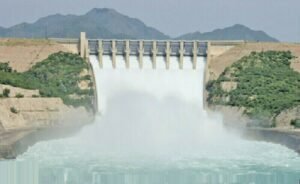06-05-2025
Bureau Report + Agencies
NEW DELHI/ SRINAGAR: India has begun work to boost reservoir holding capacity at two hydroelectric projects in the Himalayan region of Kashmir, sources with knowledge of the matter told media, after fresh tension with Pakistan led it to suspend a water-sharing pact.
The work represents the first tangible step by India to operate outside agreements covered by the Indus Waters Treaty which both countries have honored since 1960 despite three wars and several other conflicts between the nuclear-armed rivals.
 Last month, however, New Delhi suspended the pact that ensures supply to 80% of Pakistani farms after it identified two of the three assailants in an attack that killed 26 people in Kashmir as Pakistani.
Last month, however, New Delhi suspended the pact that ensures supply to 80% of Pakistani farms after it identified two of the three assailants in an attack that killed 26 people in Kashmir as Pakistani.
Islamabad denied any role in the attack and has threatened international legal action over the suspension warning; “any attempt to stop or divert the flow of water belonging to Pakistan … will be considered as an act of war.”
A “reservoir flushing” process to remove sediment began on Thursday, carried out by India’s biggest hydropower company, state-run NHPC Ltd, opens new tab and authorities in the federal territory of Jammu and Kashmir, the three sources said.
The process initially results in sediment-laden waters being released downstream from the reservoirs, potentially causing sudden inundation, followed by a reduced flow of water as the reservoirs are refilled, one of the sources said.
The work may not immediately threaten supply to Pakistan, which depends on rivers flowing through India for much of its irrigation and hydropower but it could eventually be affected if other dams launch similar efforts.
There are more than half a dozen such projects in the region.
India did not inform Pakistan about the work at the Salal and Baglihar projects, which is being done for the first time since they were built in 1987 and 2008/09, respectively, as the treaty had blocked such work, the sources added.
 They spoke on condition of anonymity as they were not authorized to talk to the media.
They spoke on condition of anonymity as they were not authorized to talk to the media.
India’s NHPC and the two governments did not reply to emails from media seeking comment.
Since independence from British colonial rule in 1947, India and Pakistan have fought two of their three wars over Kashmir, in addition to numerous short conflicts.
The flushing operation ran for three days from May 1, the sources said.
“This is the first time such an exercise has taken place and will help in more efficient power generation and prevent damage to turbines,” one of the sources told media.
“We were also asked to open the adjustable gates for cleaning, which we did from May 1”, the source said, adding that the effort aimed to free dam operations from any restrictions.
People living on the banks of the Chenab River on the Indian side of Kashmir said they noticed water had been released from both Salal and Baglihar dams from Thursday to Saturday. Videos shared by locals show some sections of the river in full flow while others were partly blocked by massive sediment deposits.
The flushing of hydropower projects requires nearly emptying a reservoir to force out sediment, the build-up of which is a major cause of declining output.
For example, two of the sources said, power delivered by the 690-megawatt Salal project was far below its capacity, because Pakistan had prevented such flushing, while silt build-up also affected output at the 900-MW Baglihar project.
 Pressmediaofindia
Pressmediaofindia




